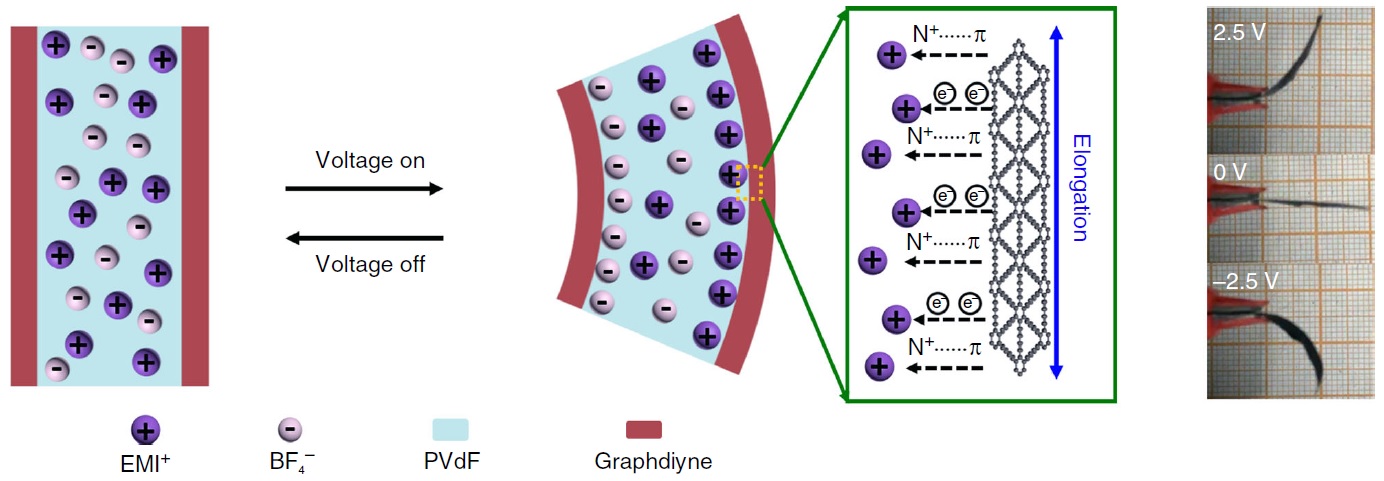Nowadays bio-inspired artificial muscles, actuated in response to external stimulus, have been attracting intensive attention in bionics, including robotics, intelligent sensors, micro electro-mechanical systems, etc. Ionic polymer metal composite (IPMC) actuators, also called electrochemical actuators, have emerged as one of the most effective actuators due to their superior performance and cycling stability under low driving voltage. Although some progress has been made, highly electro-mechanical transductive actuators have been seldom reported till now.
Graphdiyne, a newcomer of carbon nanomaterials, is believed to possess more potential applications in comparison with conventional sp2 hybridized carbon systems, namely fullerenes, CNT, and graphene. In particular, high complexation activity is a unique property of graphdiyne within numerous molecular-scale active alkyne units. But most of the previous research mainly concentrated on the high complexation activity of graphdiyne in fields like electronic devices and photovoltaics, the significant strain brought by the molecular structural change of complexation process, was neglected, which could be smartly utilized for the design of electrochemical actuators.
Recently, the joint research group led by Prof. CEHN Wei from Suzhou Institute of Nano-tech and Nano-Bionics of Chinese Academy of Sciences, Prof. LI Yuliang from Institute of Chemistry of Chinese Academy of Sciences, and Prof. TAO Xiaoming from the Hong Kong Polytechnic University, managed to fabricate a high-performance ionic polymer graphdiyne composite actuator. The study has been published in Nature Communications.
In this work, the researchers put forward and verified an alkene–alkyne complex transition mechanism for graphdiyne materials. Based on the highly efficient actuation mechanism, the as-fabricated graphdiyne actuator displayed intriguing actuation performances, including quite high frequency response (strain of 0.07% at 30 Hz), extremely high energy transduction efficiency (6.03%, exceeding that of the best-known actuation materials), large energy density (11.5 kJm−3, comparable to mammalian skeletal muscle), and excellent cycling stability in air (negligible degradation after 100,000 cycles at 1 Hz under 2.5 V).
Moreover, the fast and visible motion of the three robot models indicated its great potential for biomimetic devices. Finally, and most remarkably, the alkene–alkyne complex transition mechanism not only reinforced actuation performance, but also gave a perspective on ionic complexation for researchers.
Scientists anticipate that this discovery will present an insight into the rational design of electrode materials for other electrochemical devices, such as mechanical sensors and lithium-ion batteries.

Schematic for actuation mechanism of the graphdiyne actuator. Optical images show the bent actuator under 2.5 V at 0.1 Hz. (Image by Lu Chao)

